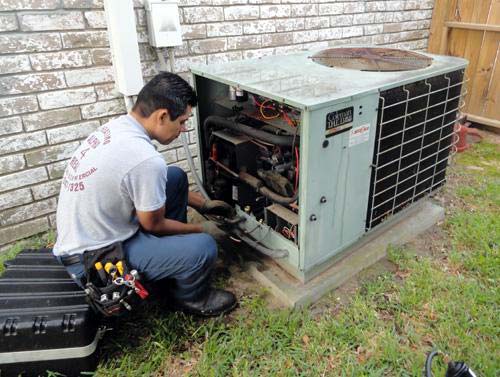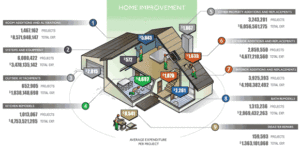When you hire a contractor to work on your home, you assume that the person or company that you hire is going to follow all safety regulations. However, this is not always the case, and failure to follow OSHA and other regulations could put a homeowner at risk of liability lawsuits or other claims.

Let’s take a look at contractors and liability and how the lack of safety on a job site could put a homeowner at risk.
Does the Contractor Provide Workers With Basic Safety Equipment?
If a worker is cutting or welding, he or she will need gloves and goggles at a minimum. The gloves will protect a worker’s hands against hot or rough surfaces while the goggles protect against sparks flying into a person’s eyes. Workers should also be provided with ventilation equipment or provided the opportunity to weld in an open area to prevent exposure to excessively hot temperatures.
Proper ventilation also makes it less likely that a worker will breathe in harmful chemicals. Those who are working at heights should have access to fall arrest systems, in addition to hard hats, to prevent falling objects from causing head injuries.
If these items are not used, a worker could be seriously hurt or killed. Unless the contractor has insurance, the homeowner could be responsible for those damages.
Does the Contractor Provide Proper Training to Employees?
A lack of training, experience, and supervision are all common reasons why workers get hurt. Younger workers should not be allowed to work by themselves, and it may be good to limit the scope of their duties until they prove that they are capable of handling additional tasks. In the event that a contractor hires a subcontractor, that subcontractor should be vetted to ensure that workers have received proper training.
Are Workers Using Proper Safety Procedures?
If heavy equipment such as a bulldozer or crane is used on a property, the person operating it should be licensed or certified to do so. He or she should know how to secure these items when not in use, as well as, understand how to position them safely.
Before starting a job, the landscape should be inspected to ensure that there is a clear path for all necessary equipment to operate without running over gas lines or running into power poles.
Is There a Safety Plan in Place?
There should be a safety plan in place in the event that a worker is hurt or a job site becomes too dangerous to work at. For instance, there should be a plan that spells out what happens if a thunderstorm develops during a roof repair project or who to call if a worker falls from the roof.
Ideally, workers will operate in teams to ensure that emergency calls can be made in a timely manner. Contractors should have plans in place to check on workers who may be performing tasks on their own or in confined spaces such as an attic or crawl space.
Is the Contractor Licensed, Bonded, and Insured?
If a contractor is not licensed, it is hard to gauge the quality of that person’s work. If a contractor is not bonded and insured, there be no way for that contractor to pay for damage done to your property or for injuries experienced by employees.
Make sure that any contractor or subcontractor hired carries appropriate workers’ compensation coverage as well. Otherwise, a worker may try to make a claim against you, which could lead to a time-consuming and expensive lawsuit even if you aren’t required to pay any damages.
Before you hire a contractor, take the time to ensure that he or she is aware of and follows relevant OSHA regulations. If it appears that regulations are not being followed, do not hesitate to find a new contractor. While it may be difficult to make a change in the middle of a project, it is better to get the job done right as opposed to getting it done fast.
Jessica Kane is a writer for OSHA Campus Online, where you can complete a variety of OSHA training courses 100% online at your convenience.



